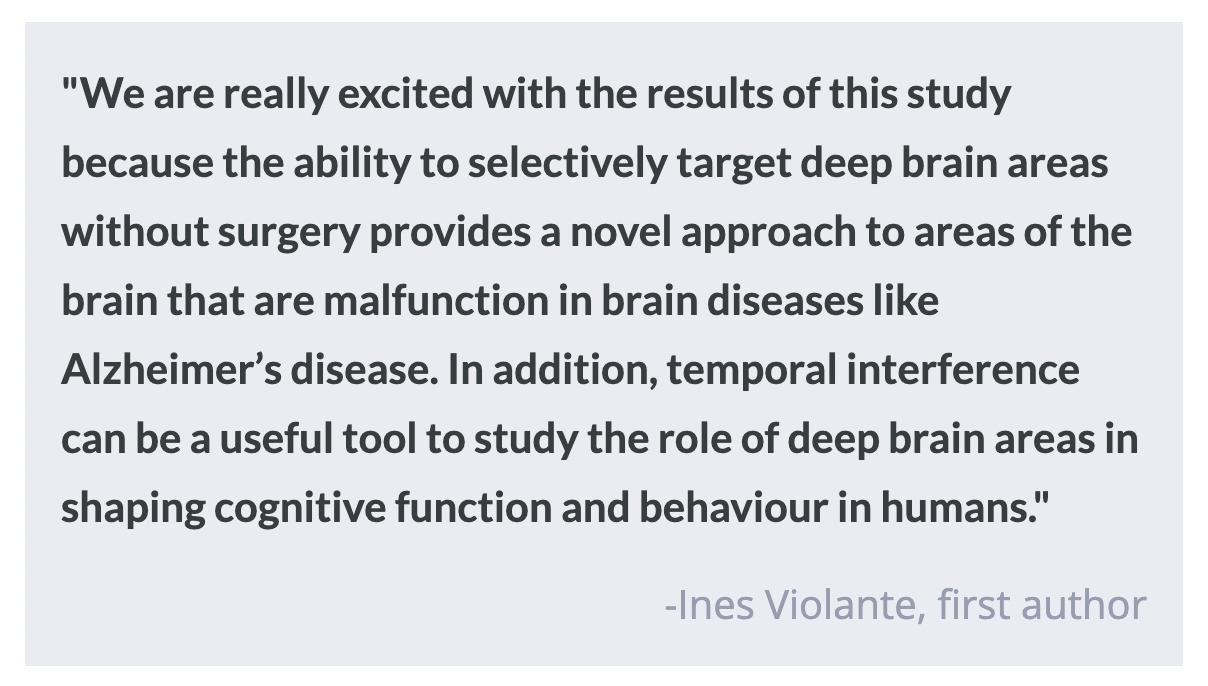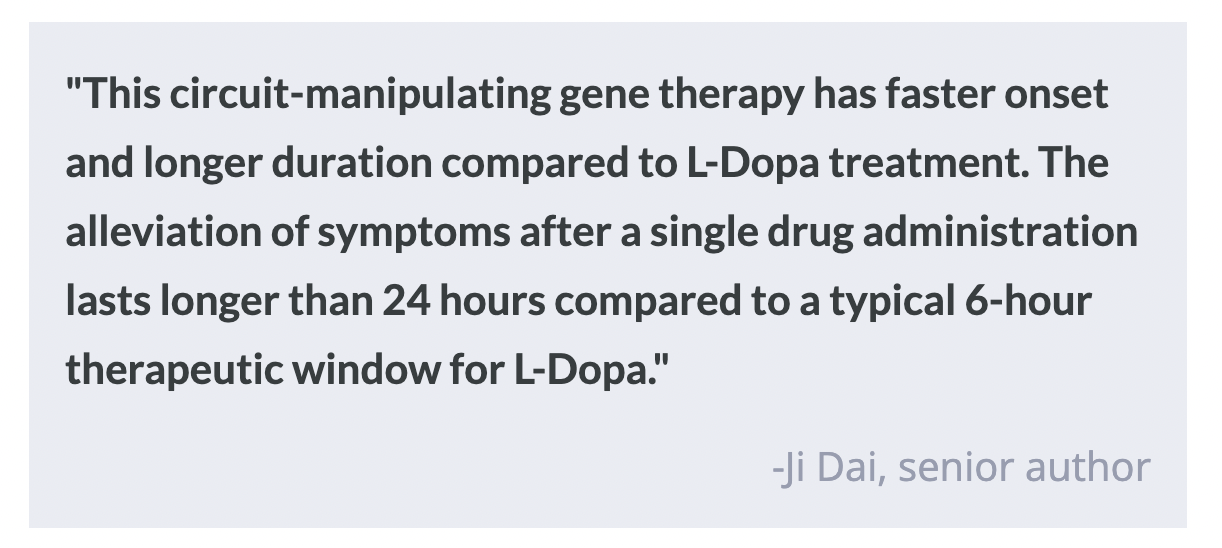A Less Invasive Form of Deep Brain Stimulation Enhances Memory Function in Healthy Adults
Post by Christopher Chen
The takeaway
Deep brain stimulation (DBS) can be used to treat neurological and psychiatric disorders, but the technique can be invasive and cause unwanted side effects. Scientists have developed a non-invasive method of DBS called temporal interference (TI) and demonstrated its effectiveness in humans by focusing on the hippocampus, where TI helped improve memory accuracy in healthy subjects.
What's the science?
Since its FDA approval in 1997 in the treatment of essential tremor, deep brain stimulation (DBS) – which relies on direct electrical stimulation of specific brain regions – has since been approved and used by clinicians to treat patients with neurological conditions such as Parkinson’s disease, epilepsy, and most recently, Alzheimer’s disease. However, DBS is quite invasive, with its use requiring patients to undergo brain surgery which can lead to additional complications. As such, researchers have sought safer, non-invasive forms of DBS such as transcranial magnetic stimulation and transcranial electrical stimulation (tES) to treat brain-related disorders. Unfortunately, these techniques can also elicit harmful side effects through unintended activation of brain areas close to but not part of the target stimulation region.
Recently, scientists have developed a method called temporal interference (TI) stimulation, which uses multiple electric fields delivered at different frequencies to target specific brain regions. By changing the distribution of current intensities between different scalp electrodes, researchers can also direct, or steer, TI to different areas. This technique offers a way to stimulate deep brain structures without the risks of surgery, while also providing a level of precision not found in other tES techniques.
Recently in Nature Neuroscience, Violante and colleagues described how scientists used TI to perform non-invasive, targeted stimulation of the hippocampus in humans under several different conditions. Data also demonstrated that TI-mediated stimulation of the hippocampus augmented memory function in healthy human subjects, highlighting the potential therapeutic benefits of TI in the near future.
How did they do it?
Considering one of the main drawbacks of other forms of neuromodulation is non-specificity, the researchers wanted to see if they could apply TI to an exclusive region of the hippocampus without disturbing the overlying cortex as well as reliably steer TI to other parts of the hippocampus. To test this, the researchers relied on an anatomical model of the human brain that could measure the effects of electrical field stimulation. They measured electrical field differences between the hippocampus and overlying cortex as well as the ability of the signal to be steered to different parts of the hippocampus. Following application in computer models, this experimental paradigm was applied to human cadavers.
The researchers used neuroimaging in live human subjects to assess the physiological impact of TI stimulation on the hippocampus. To do so, they applied TI to 20 healthy participants while monitoring their brain activity via functional magnetic resonance imaging (fMRI). Specifically, they transiently applied TI stimulation on the hippocampus during a face-name paired associative task known to measure the encoding of episodic memory and measured the evoked hippocampal blood-oxygen-level-dependent (BOLD) signal in different hippocampal regions.
A subsequent behavioral experiment involved a new cohort of 21 participants undergoing a similar face-name associative task paired with fMRI, albeit with a longer TI stimulation duration. This experiment was designed to probe the behavioral consequences of TI stimulation on memory, and stimulation was applied during the encoding, maintenance, and recall stages.
What did they find?
Electric field modeling using computer simulations as well as measurements in a human cadaver validated the ability to localize TI stimulation to the human hippocampus with minimal exposure to the overlying cortex. The electric fields generated by TI also had amplitudes consistent with previous computational studies and were within the range to synchronize neural spiking activity in the desired frequency range.
Results from the neuroimaging experiments in live human subjects showed that TI stimulation, when transiently applied during the encoding of episodic memory, reduced the BOLD signal. Importantly, this reduction was specific to the hippocampus, with no significant effect on the overlying cortex. The strongest reduction occurred when TI stimulation was targeted to the anterior hippocampus, which plays a central role in memory encoding. These data collectively show that TI can be successfully localized to a specific region of the hippocampus known to be involved in memory formation.
In the behavioral experiments involving longer stimulation durations and multiple components of memory processing, data showed a small but significant improvement in memory accuracy in participants when TI was applied. However, memories formed during TI stimulation were forgotten at a rate similar to those during sham stimulation. Overall, data suggests that TI-mediated augmentation of memory may be specific to memory accuracy.
What's the impact?
This study is the first to characterize the functionality of TI in live human subjects and show that TI can be localized to the anterior hippocampus. As for TI’s functional significance, this study suggests that TI may have the potential to enhance memory accuracy, although the magnitude of the effect was relatively small. The article’s authors suggest that future research should explore the longer-term effects of TI stimulation on memory and investigate optimal stimulation timing, frequency, and duration to achieve stronger and sustained memory benefits. Overall, this study represents a significant step in demonstrating the feasibility and potential benefits of TI in humans, particularly in the context of memory modulation.





